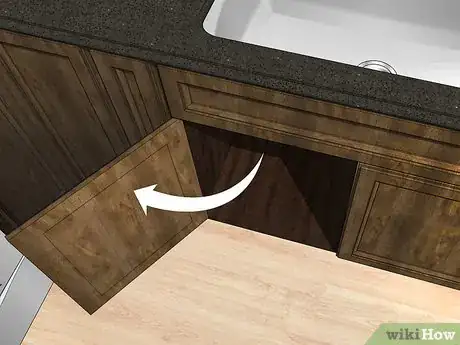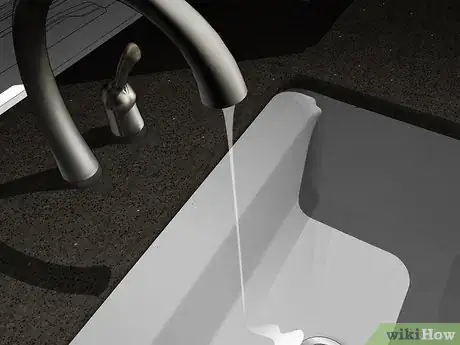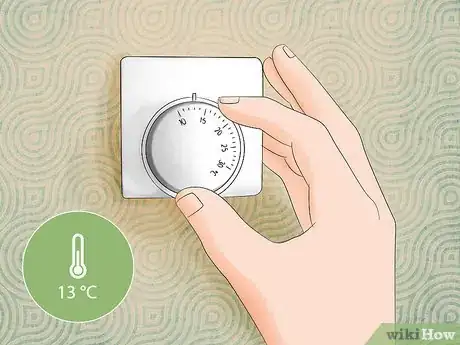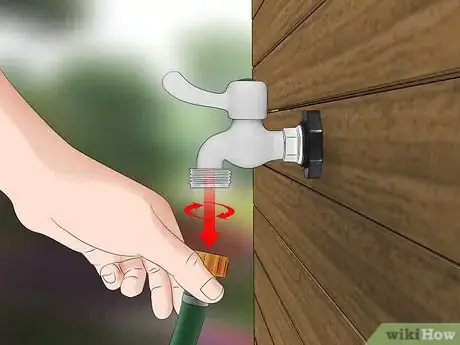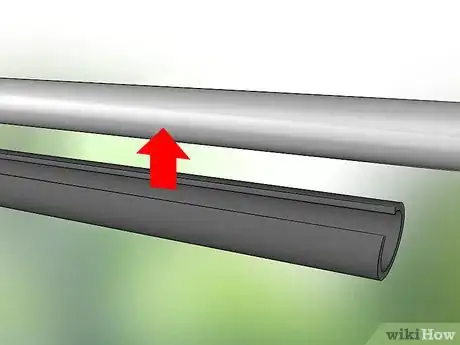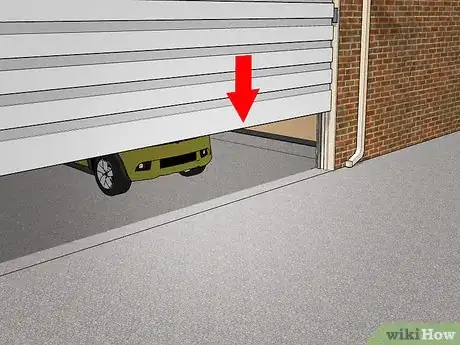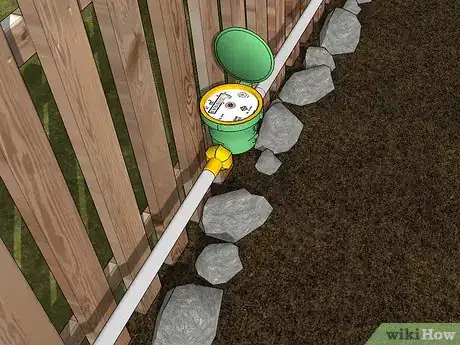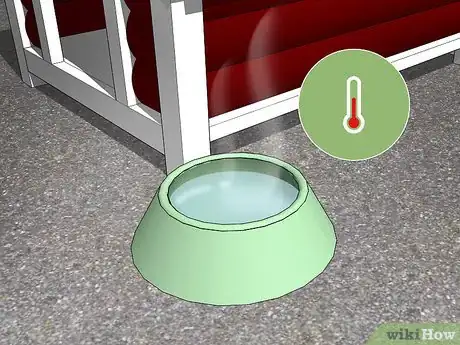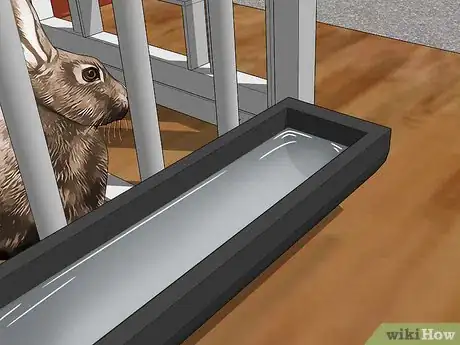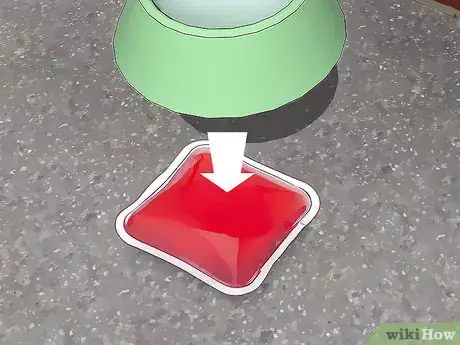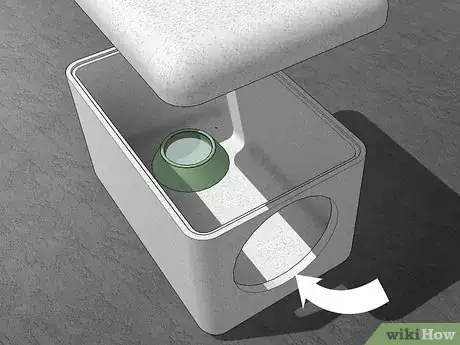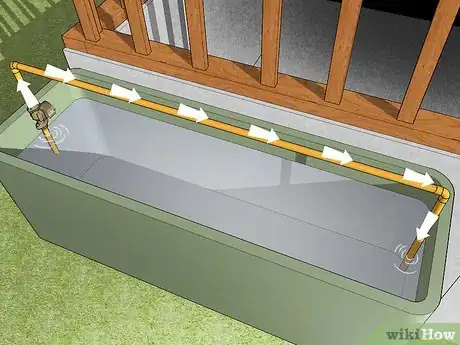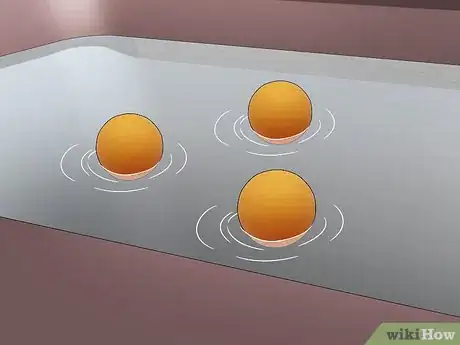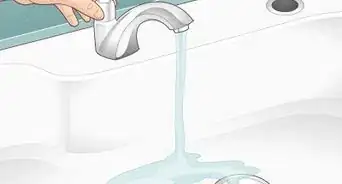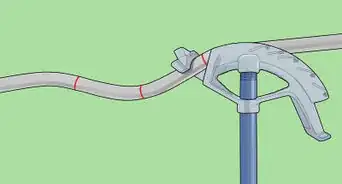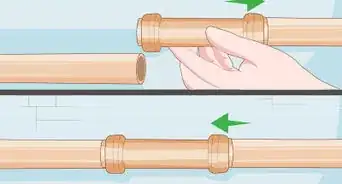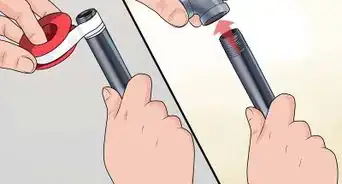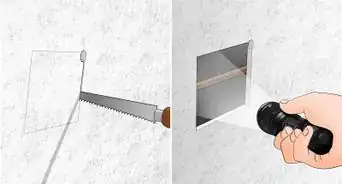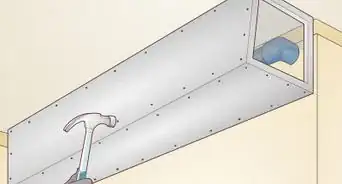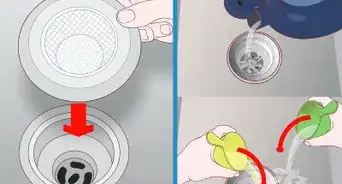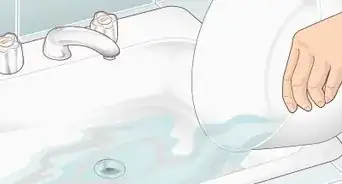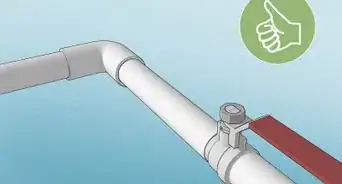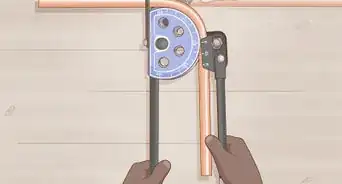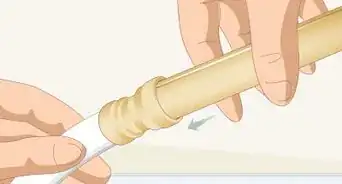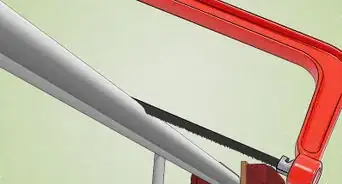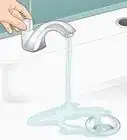This article was co-authored by Dave Jones and by wikiHow staff writer, Amy Bobinger. Dave Jones is a Professional Plumber and the Midwest Regional Vice President at Roto-Rooter Plumbing & Water Cleanup. In 1992, Jones joined Roto-Rooter as a drain service technician at the age of 18. Since then, he has risen through the ranks into positions of increasing authority. Dave served as general manager of Roto-Rooter’s Charlotte, North Carolina, and Atlanta, Georgia branches before being promoted to Contractor Area Manager and later to Regional Vice President. Dave holds Master Plumber Licenses in Pennsylvania, North Carolina, and Georgia.
This article has been viewed 29,579 times.
When temperatures drop and everything starts to freeze, the cold can cause a lot more problems than just needing an extra blanket at night. Frozen pipes can create problems inside your home, and pets and livestock can suffer when their water supply freezes. Luckily, you can keep water from freezing with a few simple tips.
Steps
Preventing Frozen Pipes
-
1Open the cupboards below your sinks. Keep the pipes under your sink warm by opening your cupboards. This will allow the temperature below your sink to be the same as it is in your house, which should help keep the pipes from freezing.[1]
-
2Allow the faucets to trickle in below-freezing temperatures. When the temperatures dip below freezing, make sure you crack the faucets on your sink to allow some water to trickle out. Moving water takes much longer to freeze. You don't have to open the tap all the way, but there should be steady trickle coming from the faucet.[2]Advertisement
-
3Leave the temperature on at least 55 °F (13 °C) if you go out. If you’re going to be away from home for a while, resist the temptation to turn the heat off. It might save you a little money on your power bill, but if your pipes freeze, you’ll pay a lot more to repair the damage.[3]
-
4Detach your garden hoses before a freeze. Water in your garden hose can freeze all the way up to the spigot and inside of your pipes. Prevent this by making sure you detach all of your hoses before a hard freeze.[4]
-
5Wrap insulation or heat tape around outdoor spigots. After you’ve detached your hoses, wrap the spigots in insulation or heat tape to help protect them from freezing temperatures.[5]
- If you don’t have insulation or heat tape on hand, try wrapping a heavy dish cloth around your spigot, then hold it in place with duct tape.
- If an outside spigot is dripping or leaking, fix the leak before the frost comes.
-
6Keep your garage doors closed. This is especially important if you have water pipes running through your garage. Closing the door will allow your garage to absorb more of the heat from your home. Even a difference of just a few degrees can sometimes make the difference when it comes to freezing pipes.[6]
-
7Know where your water meter is and keep it free from clutter. If your pipes do freeze, they can burst, creating a flood. If this happens, you’ll need to be able to get to the water main quickly to reduce damage to your home. Locate your water meter before the weather freezes and make sure there’s nothing around it that would prevent you from reaching it in an emergency.[7]
- If you turn on your sinks and no water or only a small trickle comes out, it’s probably due to a frozen pipe. Turn off your water main and call a plumber.[8]
Keeping Your Animals' Water from Freezing
-
1Fill your animals' bowls with hot water. If you have outdoor animals, they need ready access to water. To help slow down the time the water will take to freeze, start with hot water. If the water starts to freeze, you can add more hot water to help melt the ice.
-
2Keep your pets' water in thick rubber or plastic dishes. Rubber and plastic containers retain heat better than metal or glass. Keep the water warm longer by using thick rubber or plastic for your animals’ water bowls.[9]
- For large livestock, consider making a water trough out of old tires. The thick rubber is an extremely good insulator.
-
3Place commercial hand warmers under small animals’ water bowls. If you have smaller animals, like outdoor cats or dogs, you can use commercial hand warmers to help keep their water bowls warm. These usually last for about 2-3 hours and can be placed underneath the water bowl.[10]
-
4Place a water bowl inside of a styrofoam cooler for small animals. If you’re caring for smaller animals like cats, try using a styrofoam cooler to insulate their water bowl. Cut a small door into the side of the cooler, then place the water bowl inside of the cooler and close the lid.[11]
-
5Use a larger bowl or tub to hold the water for large animals. Larger volumes of water take longer to freeze. If your animals are big enough to drink from a large container, try putting their water in a big plastic tub to help keep it from freezing.[12]
- Your animals should not have to balance on the edge of a container in order to drink. They could fall in and get wet, which is extremely dangerous in freezing temperatures.
-
6Use a water circulator in livestock troughs to keep the water constantly moving. Water circulators don’t use heat to keep water from freezing. Instead, it helps prevent it from freezing in the same way that a running stream does, by keeping the water constantly moving. You can use buy one of these for about $30 wherever you buy livestock supplies and place it in your water trough to prevent freezing.[13]
-
7Place floating objects in the animals' water to break up surface ice. You can any object which will float, including ping pong balls or bottles filled with salt water. The floating object will break up surface ice as it forms on the water, helping to keep the water from freezing.[14]
-
8Invest in a tank heater or heated water bowl if it freezes often where you live. Whether you have small pets or large livestock, you can use electric or solar heat to keep their water warm. Smaller animals might benefit from a heated water bowl, although you might have to fill their water more often to counteract evaporation.[15] For large animals, you might want to invest in a tank heater, which gradually heats the entire water supply before it flows into the trough.[16]
References
- ↑ https://www.consumerreports.org/home-maintenance-repairs/how-to-keep-pipes-from-freezing/
- ↑ https://www.consumerreports.org/home-maintenance-repairs/how-to-keep-pipes-from-freezing/
- ↑ https://www.consumerreports.org/home-maintenance-repairs/how-to-keep-pipes-from-freezing/
- ↑ http://www.fox2detroit.com/news/local-news/master-plumber-explains-how-to-keep-water-pipes-from-freezing
- ↑ http://www.fox2detroit.com/news/local-news/master-plumber-explains-how-to-keep-water-pipes-from-freezing
- ↑ https://www.consumerreports.org/home-maintenance-repairs/how-to-keep-pipes-from-freezing/
- ↑ http://www.fox2detroit.com/news/local-news/master-plumber-explains-how-to-keep-water-pipes-from-freezing
- ↑ https://www.consumerreports.org/home-maintenance-repairs/how-to-keep-pipes-from-freezing/
- ↑ https://www.neighborhoodcats.org/how-to-tnr/colony-care/stop-freezing-water
- ↑ https://www.neighborhoodcats.org/how-to-tnr/colony-care/stop-freezing-water
- ↑ https://www.neighborhoodcats.org/how-to-tnr/colony-care/stop-freezing-water
- ↑ http://www.offthegridnews.com/how-to-2/6-winter-tricks-that-keep-livestock-water-from-freezing/
- ↑ http://www.offthegridnews.com/how-to-2/6-winter-tricks-that-keep-livestock-water-from-freezing/
- ↑ http://www.offthegridnews.com/how-to-2/6-winter-tricks-that-keep-livestock-water-from-freezing/
- ↑ https://www.neighborhoodcats.org/how-to-tnr/colony-care/stop-freezing-water
- ↑ http://www.offthegridnews.com/how-to-2/6-winter-tricks-that-keep-livestock-water-from-freezing/
About This Article
To keep the water in your pipes from freezing, open the cabinets beneath your sinks to allow the heat from your home to warm your pipes and make sure to leave the faucets trickling at night. Outside, detach all of your garden hoses and wrap your outside spigots in insulation or heat tape. Keep reading to learn how to make sure your outdoor animals' water supply doesn't freeze!
